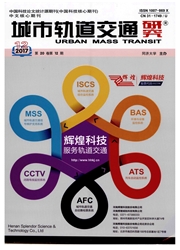

 中文摘要:
中文摘要:
高铁时代,铁路网的完善与高速铁路建设对沿线中心城市可达性变化产生重要影响。选取2008年、2015年及2025年作为时间断面,以甘肃省14个地级市及全国交通数据为基础,应用可达性技术分析方法对高铁通车前后沿线中心城市的交通可达性演变进行研究。研究结果表明:2025年高铁时代,中心城市之间的交通可达性水平显著提高;沿线中心城市对周围地区辐射影响增强;宝兰客运专线建成使得天水至西安段交通可达性增幅超两倍;兰渝高铁的建成缩短甘肃省至中部及南方大部分省份时间,实现地理时空有效收敛。“一带一路”背景下,研究可达性演变有利于廓清各地市空间发展导向,明晰省内各地区和省际地区间的联系,为区域空间发展战略的制定提供参考。
 英文摘要:
英文摘要:
The improvement of railway network and the con- struction under the age of high-speed railway have important influence on the changes of the central cities accessibility a- long the lines. Taking three years of 2008,2015 and 2025 as a time section,based on the traffic data of 14 central cities in Gansu Province and all the nation of China respectively, traffic accessibility evolution of the central cities along high-speed railway lines before and after the opening of high-speed rail- way is studied by using the accessibility technology analysis method. The result shows that, the construction of high speed railway will enhance the traffic accessibility level of the cen- tral cities in Gansu Province significantly about the year of 2025, the radiation effect of central cities along the high-speed railway lines to the surrounding areas will be also increased. For instance, the opening of Baoji-Lanzhou passenger special line has doubled the traffic accessibility of the section betweenTianshui City and Xi'an City. Against the background of the Belt and Road Initiative, the study of accessibility evolution aims to clarify the urban space development orientation in Gansu Province, the relationship between regional and provin- cial regions, to provide a reference for the regional spatial de- velopment strategy.
 同期刊论文项目
同期刊论文项目
 同项目期刊论文
同项目期刊论文
 期刊信息
期刊信息
